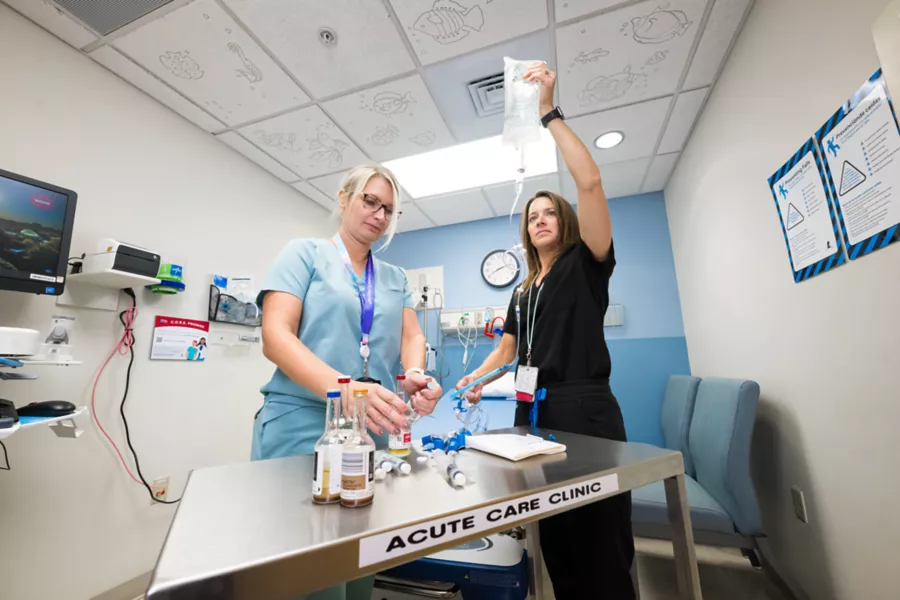The Acute Care Clinic: Your Go-To Resource for Non-Emergency Medical Crises
In the complex landscape of modern healthcare, knowing where to turn for immediate medical attention can be confusing. The emergency room (ER) is often the default for any urgent health issue, but long wait times and high costs can make it an inefficient choice for many conditions. Enter the acute care clinic, a vital healthcare model designed to bridge the gap between primary care physicians and hospital ERs. These facilities provide a timely, cost-effective, and specialized solution for a wide range of non-life-threatening illnesses and injuries.
What Exactly is an Acute Care Clinic?
An acute care clinic, also known as an urgent care center, is a medical facility that offers walk-in services for conditions that require prompt attention but are not severe enough to warrant a visit to the emergency room. Unlike primary care providers, who typically operate on an appointment-only basis, these clinics are designed for convenience and accessibility, often offering extended hours on evenings and weekends.
The scope of care at an acute care clinic is broad yet specific. They are equipped to handle a variety of common medical issues, including infections, minor fractures, sprains, cuts requiring stitches, and severe allergic reactions. They function as a crucial access point for patients who cannot get a same-day appointment with their regular doctor or who need care outside of standard office hours.
When to Choose an Acute Care Clinic Over the ER
Understanding the distinction between appropriate ER and acute care clinic visits is key to using the healthcare system effectively. The emergency room is reserved for true, life-threatening emergencies. You should always call emergency services or go directly to the ER for symptoms such as chest pain, difficulty breathing, severe burns, signs of a stroke (like sudden numbness or confusion), major trauma, or uncontrolled bleeding.
In contrast, an acute care clinic is the ideal choice for a wide array of non-critical but pressing health concerns. Common reasons to visit an acute care clinic include:
-
Illnesses: Persistent fevers, flu symptoms, strep throat, ear infections, sinus infections, bronchitis, and severe colds.
-
Minor Injuries: Sprains, strains, minor burns, small bone fractures (like in fingers or toes), and cuts that may require stitches.
-
Skin Conditions: Rashes, poison ivy, minor infections, and abscesses.
-
Diagnostic Services: On-site X-rays, lab tests for mono or strep, and flu tests.
-
Preventative & Occupational Health: Sports physicals, routine vaccinations, flu shots, and treatment for minor workplace injuries.
By choosing an acute care clinic for these conditions, you free up emergency room resources for the most critical patients while receiving faster and more affordable care for yourself.
The Tangible Benefits of Walking Into an Acute Care Clinic
The rise in popularity of acute care clinics is no accident; it is driven by several significant advantages they offer to patients.
1. Convenience and Accessibility: The “walk-in” model is perhaps the biggest draw. There is no need to schedule an appointment weeks in advance. This flexibility is invaluable for busy individuals, parents with sick children, and anyone who experiences a sudden medical issue. With extended hours, these clinics provide care when it’s needed most.
2. Reduced Wait Times: Emergency rooms prioritize patients based on the severity of their condition (triage). Someone with a sprained ankle will likely wait for hours while patients with heart attacks or strokes are treated first. At an acute care clinic, the caseload is comprised of similarly acute but non-life-threatening issues, leading to significantly shorter average wait times.
3. Cost-Effectiveness: A visit to the emergency room is notoriously expensive, involving facility fees, higher physician charges, and costly procedures. A visit to an acute care clinic for the same condition, such as strep throat or a few stitches, typically costs a fraction of the price. This can lead to substantial savings for both patients and insurance companies.
4. Comprehensive, On-Site Services: Modern acute care clinics are well-equipped. Many have on-site X-ray and laboratory services, allowing for rapid diagnosis and treatment without the need for a referral to another facility. This integrated approach means you can often get a diagnosis, treatment, and any necessary prescriptions all in one visit.
A Vital Piece of the Healthcare Puzzle
Acute care clinics are not meant to replace a long-term relationship with a primary care physician, who manages your overall health and chronic conditions. Instead, they serve as a perfect complementary service. They alleviate pressure on overwhelmed hospital systems, provide a practical and efficient solution for unexpected medical needs, and empower patients to make smarter, more cost-effective healthcare decisions and you can read at USA Today Guest Post.
The next time you or a family member faces a non-life-threatening medical issue, remember the acute care clinic. It’s a modern healthcare solution designed for your immediate needs, offering quality care without the emergency room wait or expense.
